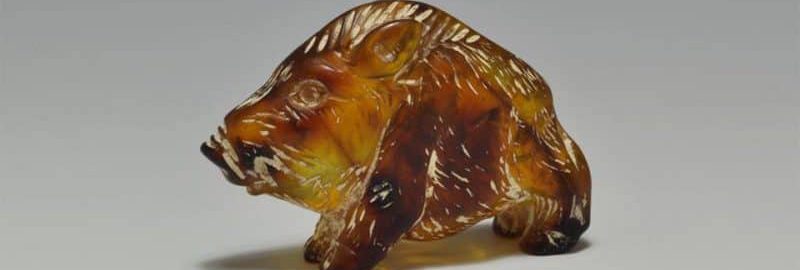Chapters
In ancient Rome, amber was a valued material with many uses, from jewellery to amulets and home decorations. Its extraordinary beauty, healing properties and rarity attracted the attention not only of wealthy citizens but also of the emperors themselves. Where did this fascination with amber come from and what role did it play in Roman culture?
Amber road: from the Baltic Sea to Rome
The source of Roman amber was northern Europe, especially the Baltic coast, today’s areas of Poland, Lithuania, Latvia and Kaliningrad (Russia). It was there that the largest deposits of amber were located, and trade routes led this valuable raw material to the heart of the Roman Empire. One of the most famous routes was “szlak amber“. The amber route, like other historical trade routes, ran through natural “corridors”, i.e. river valleys. The exact route of the trail has not been clearly defined. It is believed to have started in Aquileia on the Adriatic Sea, one of the Roman craft centres. Initially, the trail led through the Moravian Gate, then turned north and through Silesia, eastern Greater Poland and Kujawy (fording the Vistula in Otańczyn near Toruń) led to the Baltic Sea.
It can be assumed that the main thread of the trail, starting from the turn of the 1st and 2nd centuries CE, ran from Vienna (Vindobona) through Brno, Kłodzko, Wrocław, Kalisz (Calisia/Kalisia) , Konin (Setidava), Bydgoszcz and Świecie to Gdańsk.
Amber as a symbol of luxury and magic
The Romans quickly noticed the aesthetic value of amber. It was used to create jewellery, home decorations, and architectural details. The interiors of the houses of wealthy patricians were decorated with objects made of amber, which were supposed to prove their status and wealth. Emperor Nero was a famous lover of amber, and his reign was the period of the greatest popularity of this raw material.
Pliny the Elder describes one of the expeditions that took place during the reign of Emperor Nero. Well, Nero sent his subject to deliver him a precious stone. Considering the distance of the Baltic Sea from Rome, his journey probably lasted two months, and he travelled about 30 km a day. The expedition was an official state expedition, not a private commercial initiative.
Healing and magical properties of amber
The Romans also attributed magical and healing properties to amber. The Romans also used amber in medicine. They were tied to children as amulets. According to Kallistratus, at any age, amber works well against madness and urination problems. Its special variety called “chryselectrum”, a sort of golden colour, tied to the neck was supposed to cure fever and other diseases, mixed with honey and rose oil, ear diseases.
Amber in art and fashion
Amber decorations were worn by women, but also by men. It was often used to make figurines that were part of home decor and various small everyday items, such as combs or boxes. Necklaces, bracelets and rings were trendy. Small figurines, often depicting deities or mythological scenes, were not only beautiful decorations but also amulets with religious significance.







